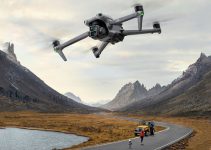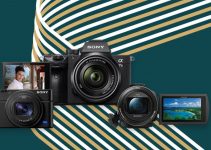It’s a bit of an understatement to say that the Canon EOS R had a warm reception (stone-cold could be a better term) when it was announced back in October 2018. But is there a reason for this reaction, or is it actually a good camera that has been glossed over since it wasn’t in sync with the fads that dominate the indie filmmaking world at the time?
Could it be that “an underwhelming 5D Mark IV lackluster clone” is not a correct definition and that this camera hides some qualities we’ve missed while looking somewhere else? Parker Walbeck and his team are on a mission to compare these two particular cameras in Canon’s lineup. Hold on and let’s see what they made of it.
After a while shooting with both the cameras side-to-side, Parker and his teammates tried a blind test with some professional filmmakers and their social media audience, and guess what – no one could tell the difference between the two cameras!
Talking about some bias here… So, if the two siblings are equivalent image-wise, and one costs much less, the EOS R seems to be the best camera to opt for. End of the article, see you next time and thank you very much. Or not? Well, probably we should dig a little deeper.
When comparing the two, the obvious factor (once we’ve leveled the confrontation over the image quality) is price. The EOS R is $700 cheaper than the 5D Mark IV, but all that glitters is not gold.
The EOS R is, in fact, adopting the new lens RF mount is a pretty big hidden cost, since all the lenses available at the moment (35mm aside) are well more expensive than the camera itself, while the 5D Mark IV uses the well known EF mount, supported by thousands of lenses in both new and used market.
Truth to be told, a simple adapter will save your wallet, allowing you to mount EF lenses on your EOS R. There are two adapters available, a simple one that will cost you $100, while the advanced one will set you back $200, but will give you the ability to use the control ring. What is the control ring, you may ask?
It’s an addition of the R system, a ring on top of the lens that you can custom to have the function you prefer: iris, ISO, exposure compensation, there are a lot of possibilities. It could seem like a gimmick, but once integrated into your workflow, it will be a natural movement.
On top of that, the R series lenses are amazing. They have stellar image quality while being super crisp and sharp with lower apertures… It’s a true evolution of the lens. Unfortunately, all these features require a shorter flange distance, meaning we’ll never see them adapted the other way around on an EF mount camera.
Now, looking at the cameras one next to the other, you’ll immediately notice the size difference. It goes without saying that being a mirrorless camera the obvious advantage is for the R series on the portability side. It’s lighter and smaller but has the same great build quality we expect in a camera made by Canon.
The only point of failure the R has when compared to the 5D Mark IV is referring to the LCD. Both units have touch LCDs, but having a flip-out screen, the EOS R could be prone to easier failures since it adds a weak point to the structure and in the event of a fall it could be the easiest spot to brake.
Aside from the LCD and the control ring, there is another nice add on in the R series: the swipe touch bar. Just like Apple has done on the MacBook, Canon added a touch bar to the back of the EOS R.
The small OLED display with touch functionality can be customized to what best meets your needs – white balance, ISO, there are more than a few choices available.
Other than that, the two bodies share a lot of similarities, both have Canon’s great menu system, and both use well known LP-E6 batteries (even if the R seems to be a little more power-hungry, lasting a little less on a single charge) but the real feature setting the R apart is the focus peaking. Finally!
It took long enough for Canon to get peaking in a non-cine camera, but eventually, they got it right, and man is it useful.
What instead is still years behind is the frame and resolution side of the cameras. Both share similar underwhelming specs, shooting 120fps in 720p, 60fps in 1080p and just 30fps in 4K.
That’s not what you’d expect by an industry leader such as Canon used to be. On top of that, shooting in 4K will give you the infamous crop on the sensor, resulting in 1.74x, straight up a deal-breaker for many folks.
A huge win to the R series, however, comes from the color depth of the image. The camera is capable of outputting a 10bit signal to an external recorder.
Pair it with the wider dynamic range, and we are getting to the conclusion of this comparison with the certainty that what we thought initially, is actually right: the EOS R is indeed a better choice at the moment for filmmakers.
So, tossing aside other minor differences, like the card slot or the AF system, if you’re bound to get a new camera, you can (and should) move to the R system.
The RF mount is due to have more lenses coming, plus it offers much more functionality. Overall, the whole industry is moving to the mirrorless format, while the pentaprism somehow remains a relic of the past, useful only to still photography.
Rumors have it that the R series will have a “Pro” camera in the next year, so keep that in mind too. All in all, there are more options coming, and they all seem to be good ones.
[source: Parker Walbeck]
Order Links:
Canon EOS R Mirrorless Digital Camera (B&H, Amazon)
Canon EOS 5D Mark IV DSLR Camera (B&H, Amazon)
Disclaimer: As an Amazon Associate partner and participant in B&H and Adorama Affiliate programmes, we earn a small comission from each purchase made through the affiliate links listed above at no additional cost to you.
Claim your copy of DAVINCI RESOLVE - SIMPLIFIED COURSE with 50% off! Get Instant Access!




